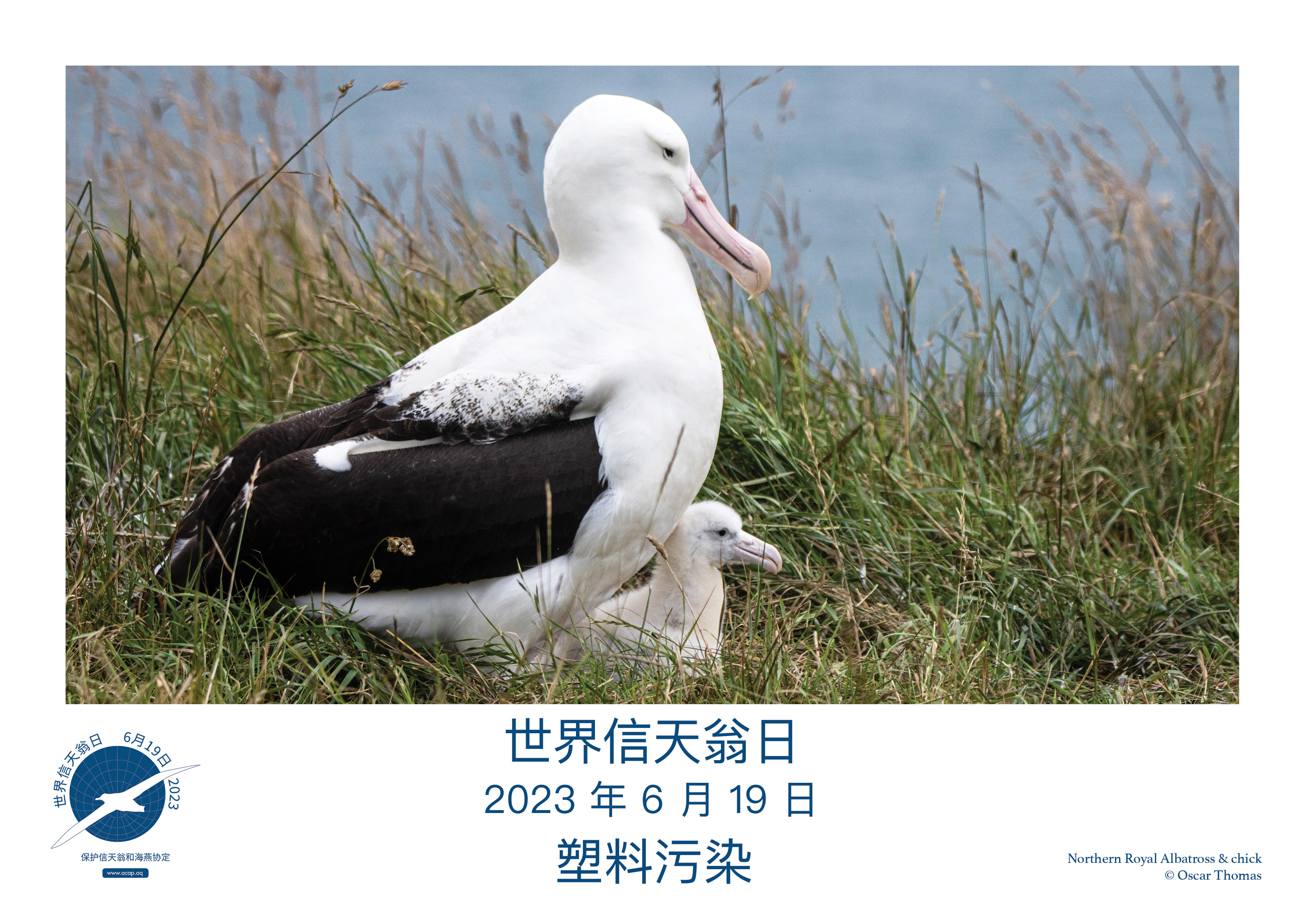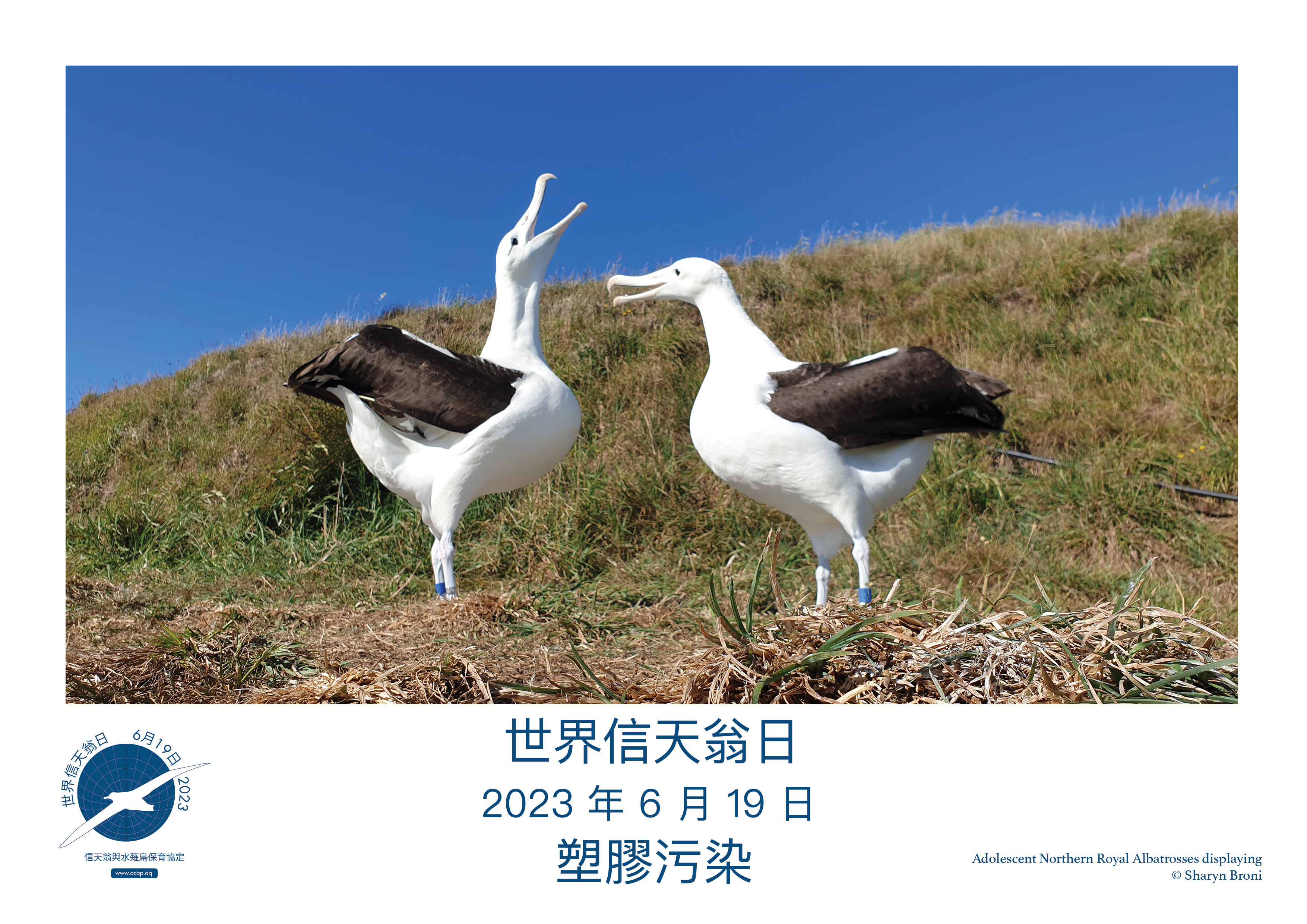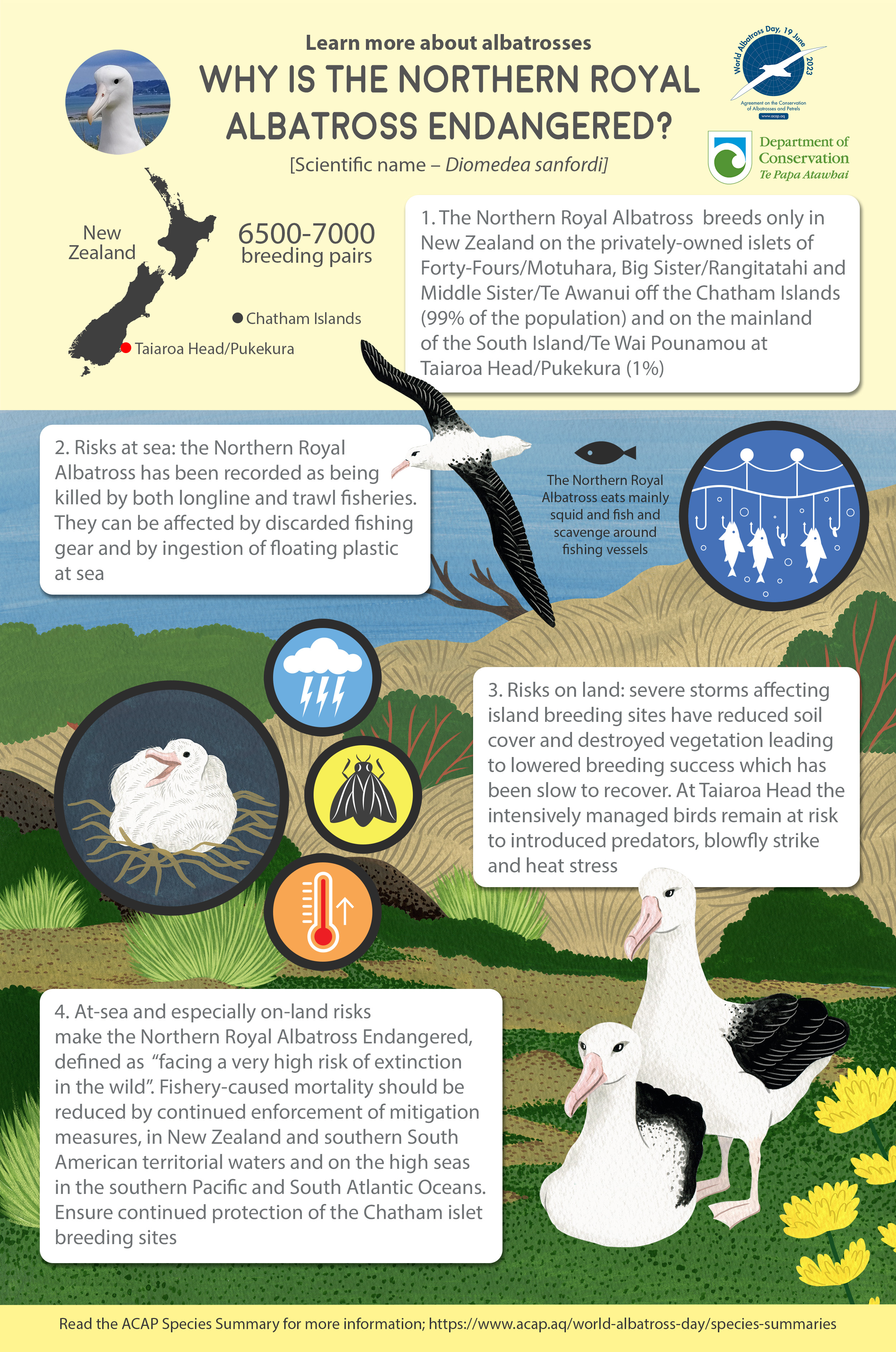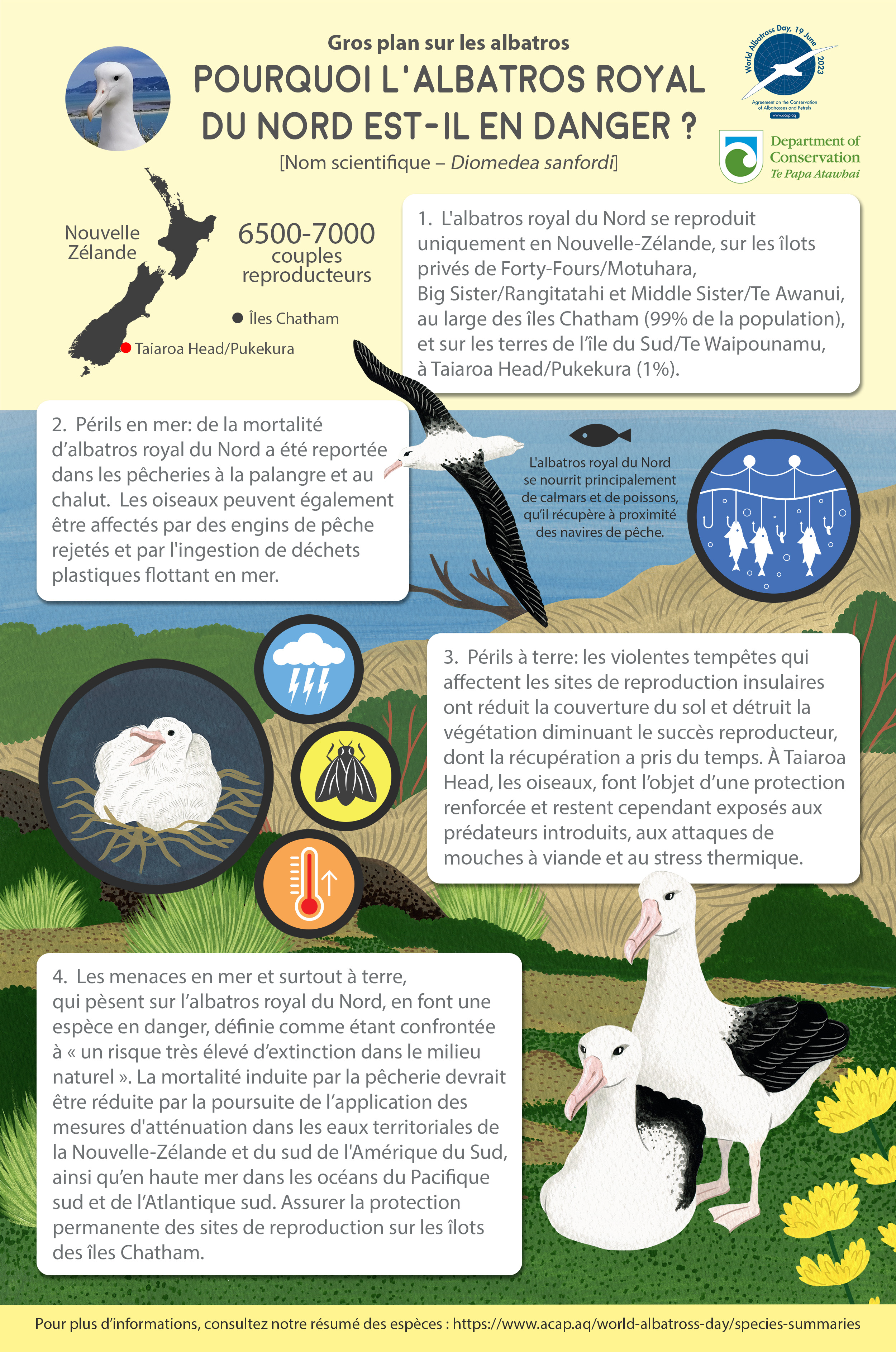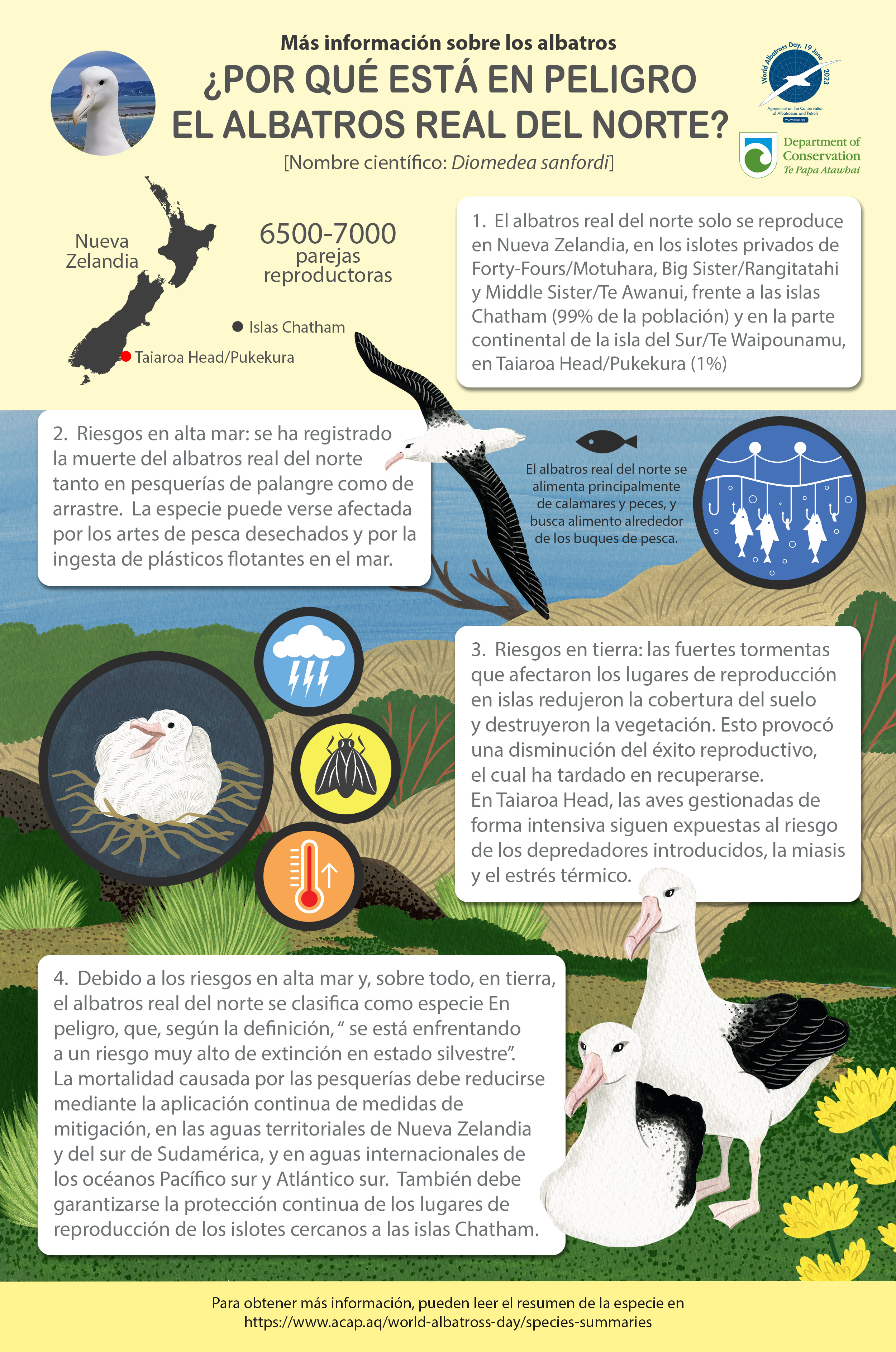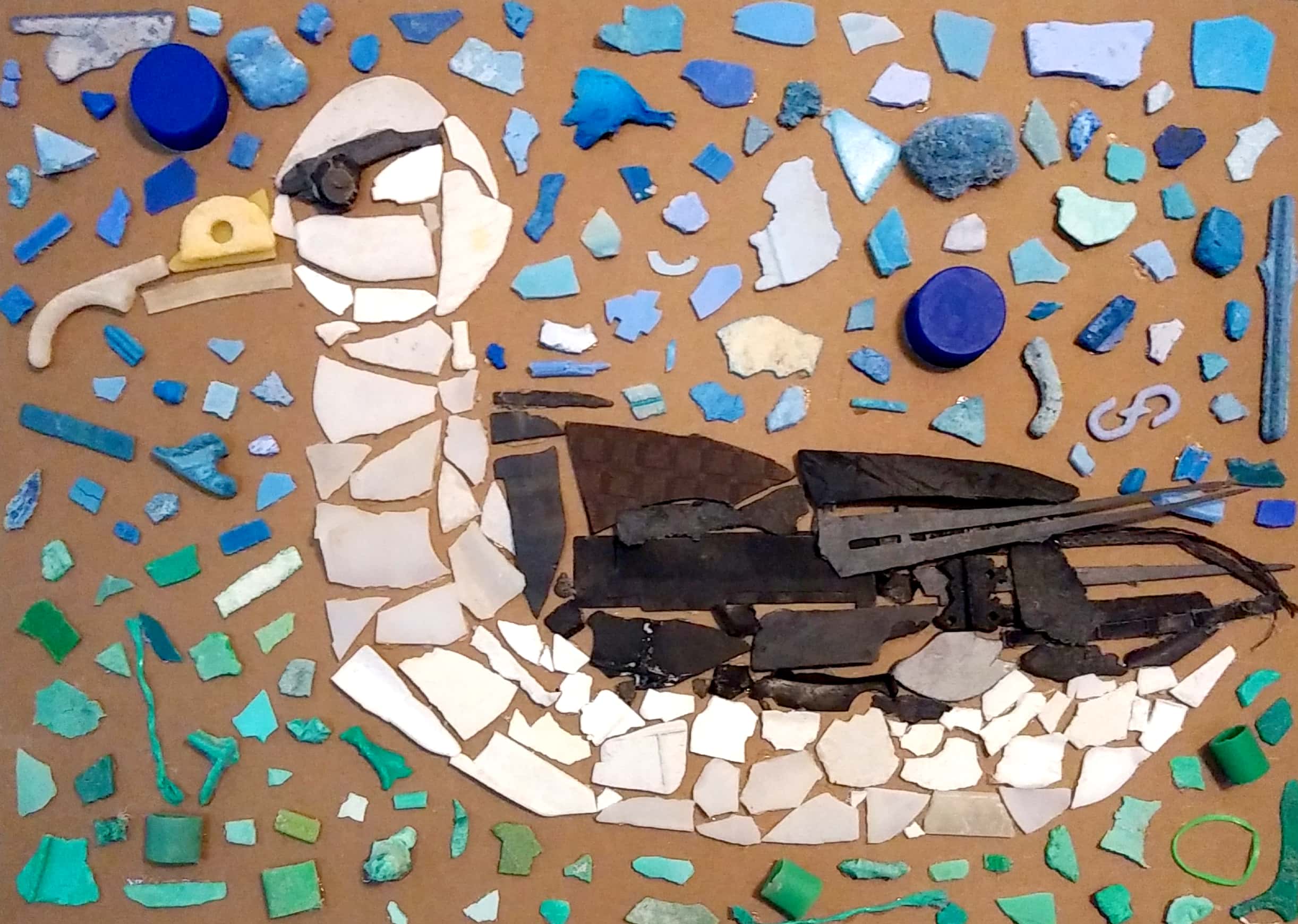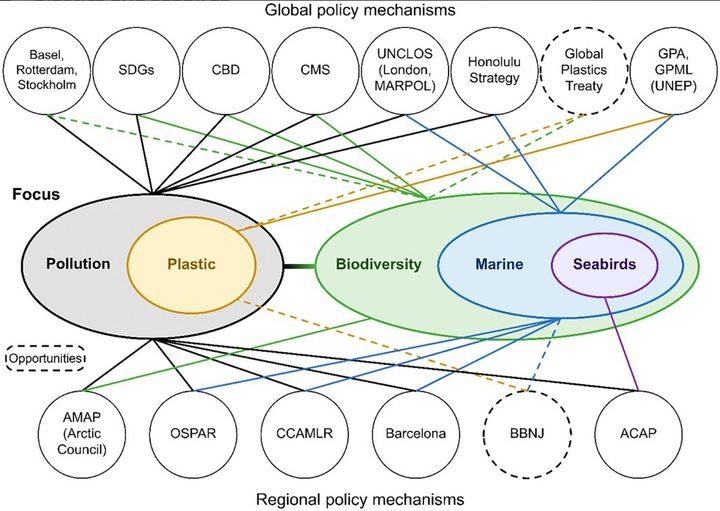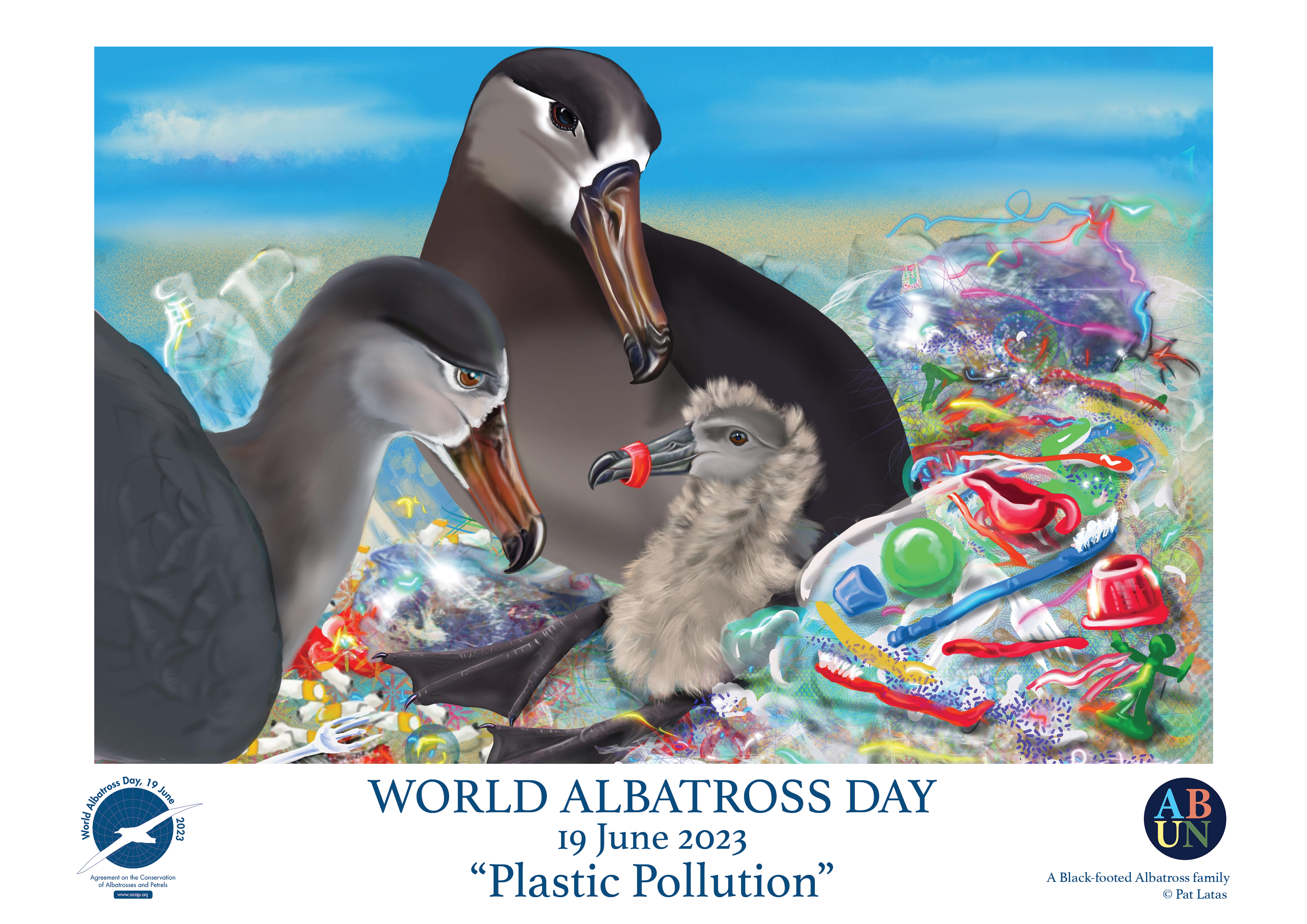
'Plastic Lament', Black-footed Albatross family, by Patricia Latas
NOTE: It's Day 2 of "WADWEEK2023", marking World Albatross Day on 19 June and its theme of "Plastic Pollution".
Six posters featuring selected artworks produced by Artists and Biologists Unite for Nature (ABUN) have been chosen from a total of 75 artworks by 31 artists in a collaboration with ACAP for World Albatross Day 2023.
The Albatross and Petrel Agreement has chosen the theme "Plastic Pollution" to mark the fourth World Albatross Day, to be celebrated on 19 June 2023. This follows the inaugural theme “Eradicating Island Pests” in 2020, “Ensuring Albatross-friendly Fisheries” in 2021, and “Climate Change” last year.
Albatrosses are affected by a range of pollutants, of which plastics, whether ingested and then fed to chicks or causing entanglements, are certainly the most visible and well known to the general public. However, albatrosses face other significant pollutants, including heavy metals, (such as mercury) and POPs (persistent organic pollutants, such as insecticides).
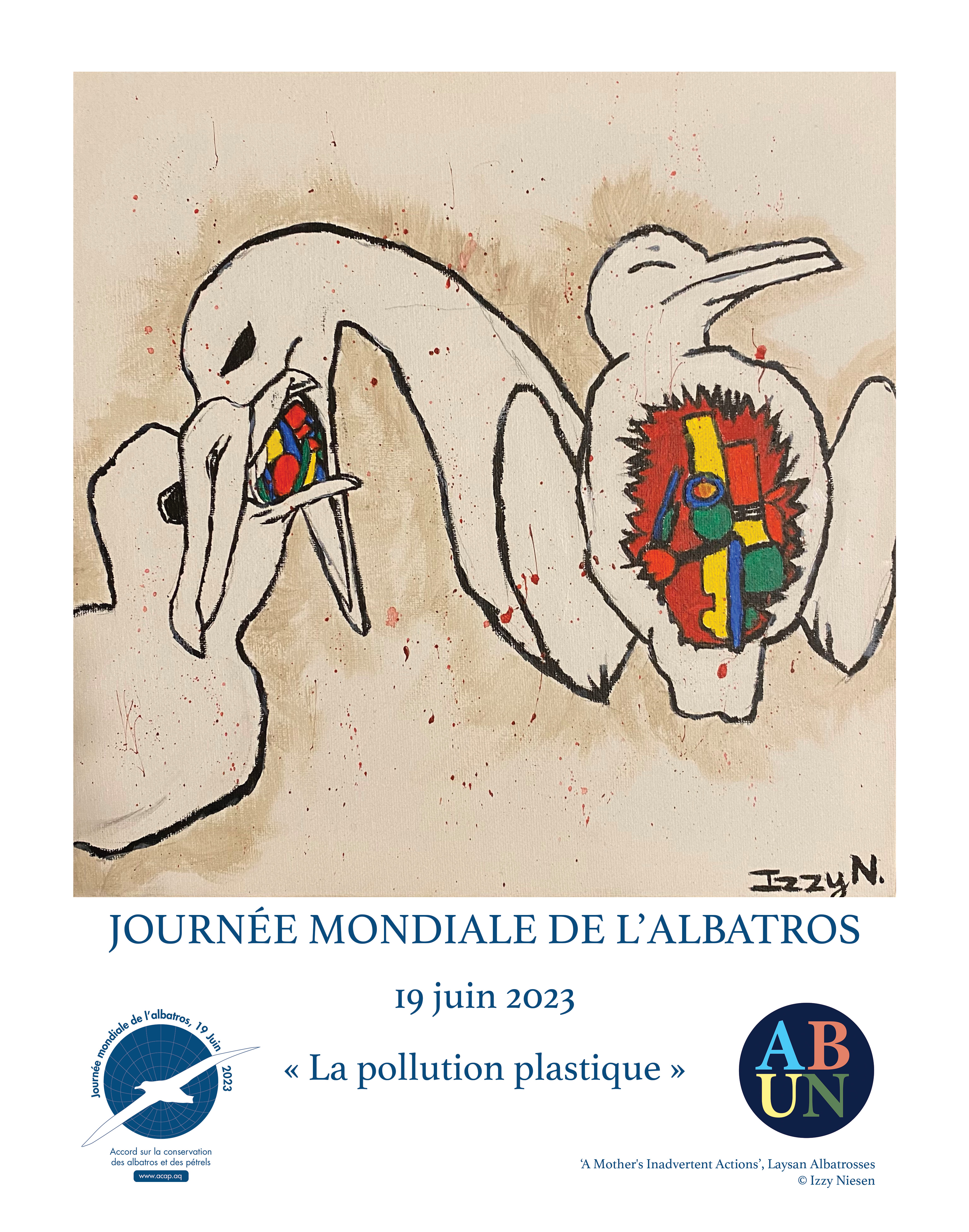
‘A Mother’s Inadvertent Actions’, Laysan Albatrosses by 13-year-old Izzy Niesen
Two new albatross species are being used to feature the theme for this year’s World Albatross Day. These are the globally Endangered Northern Royal Albatross D. sanfordi, endemic to New Zealand, and the abundant and widespread Black-browed Albatross Thalassarche melanophris. In addition, coverage is being given again to last year’s featured species, the Black-footed Phoebastria nigripes and Laysan P. immutabilis Albatrosses of the North Pacific, which ingest more plastic (and then feed it to their chicks) than do the southern hemisphere species.
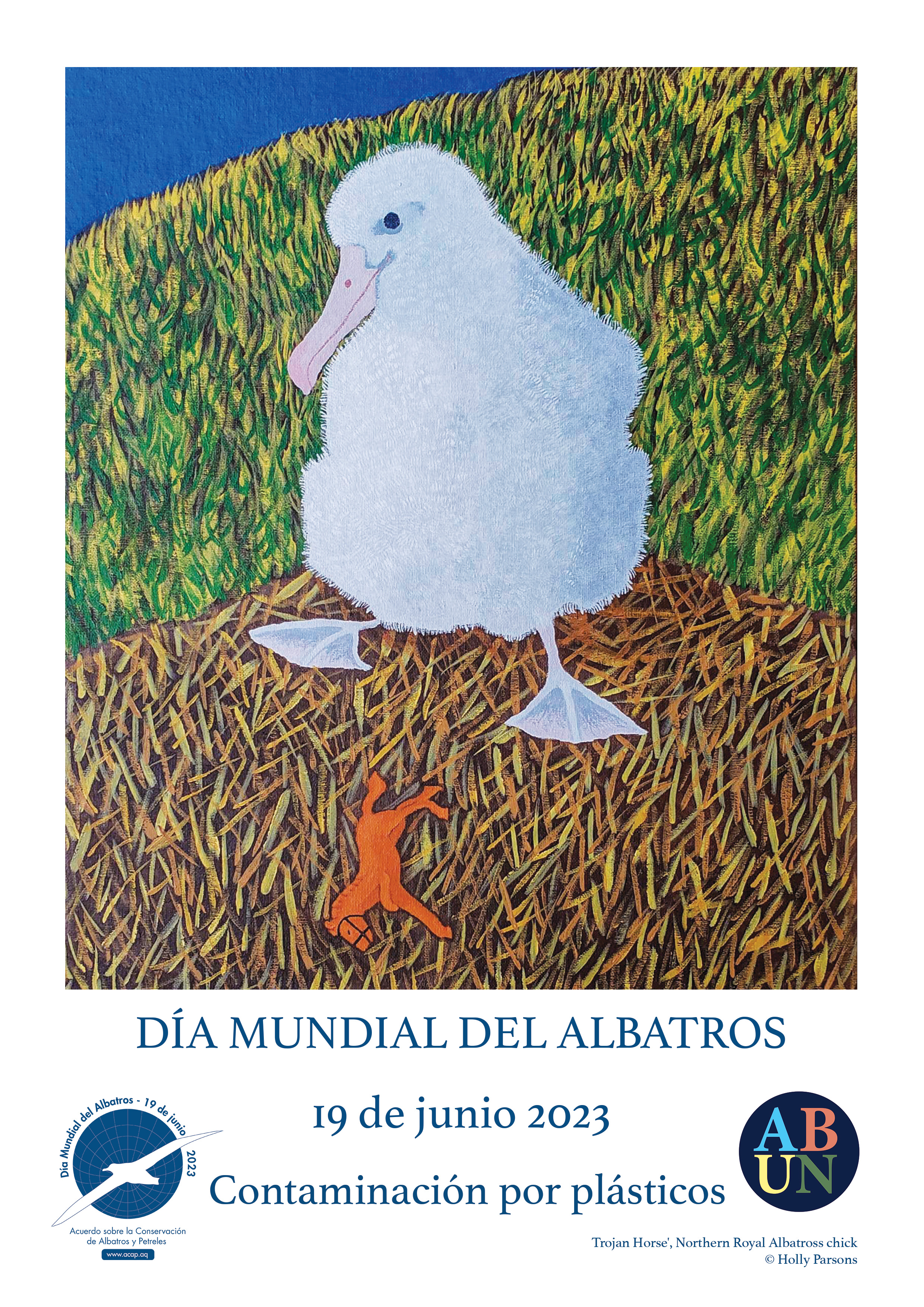
‘Trojan Horse’, Northern Royal Albatross by Holly Parsons
The posters, that all depict plastic pollution affecting albatrosses, are available to download from the ACAP website here, in the three ACAP official languages of English, French and Spanish, as well as in Portuguese, for printing during the build up to World Albatross Day on 19 June. ACAP requests it be acknowledged in their use for conservation purposes. They should not be used for financial gain.
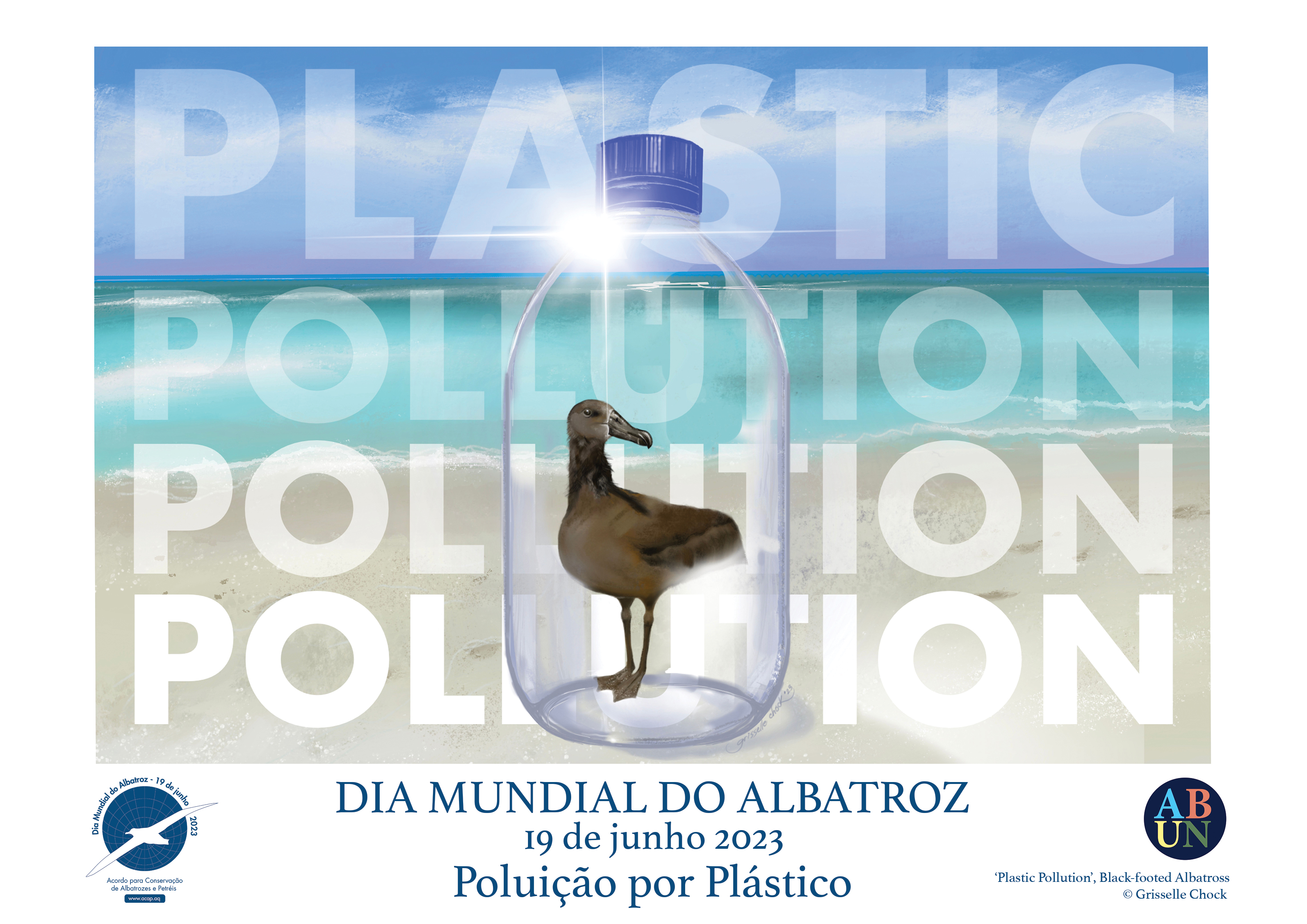
"Plastic Pollution’, Black-footed Albatross by Grisselle Chock
Click here to view a set of 12 WAD2023 photo posters in nine languages.
With grateful thanks to ABUN artists Grisselle Chock, Patricia Latas, Izzy (Isabella) Niesen, Holly Parsons, Snah and Rosana Venturini and to ABUN Co-founder Kitty Harvill and ABUN Administrator Marion Schön for their support of albatross conservation. Thanks also to 'Pep' Arcos, Karine Delord and Patricia Serafini for help with translations. Poster design by Bree Forrer, ACAP Communications Advisor.
John Cooper, Emeritus Information Officer, Agreement on the Conservation of Albatrosses and Petrels, 14 June 2023
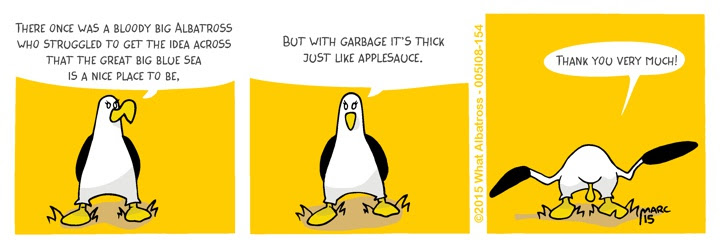
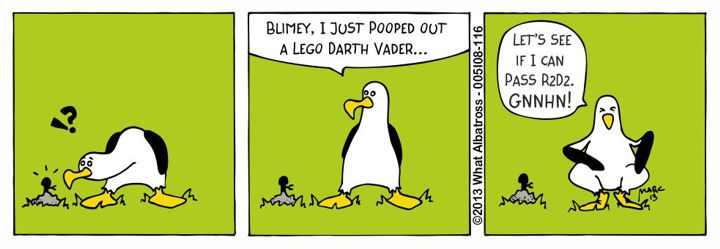
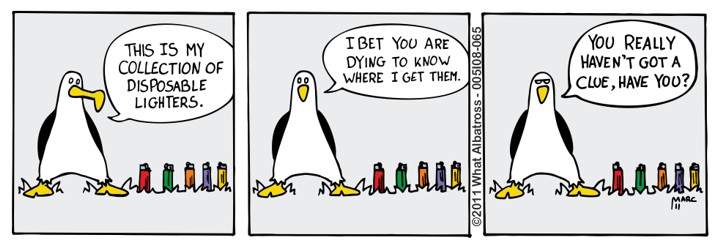
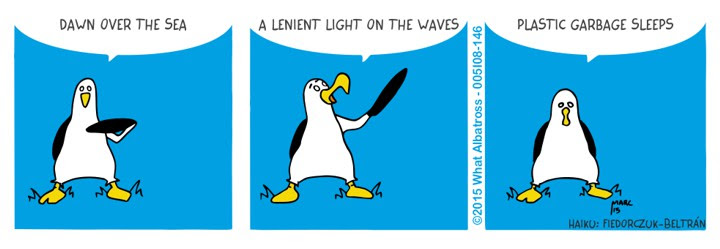 NOTE. Day Five of 'WADWEEK2023' and time for a little humour.
NOTE. Day Five of 'WADWEEK2023' and time for a little humour.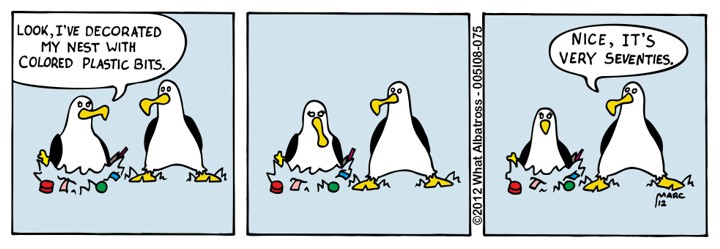
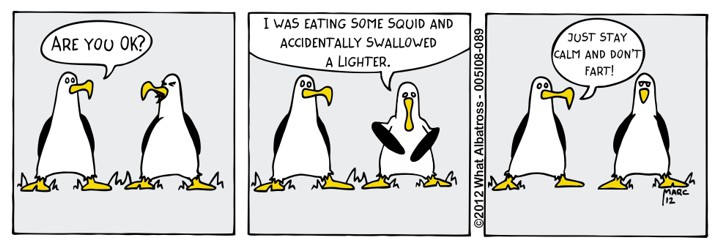
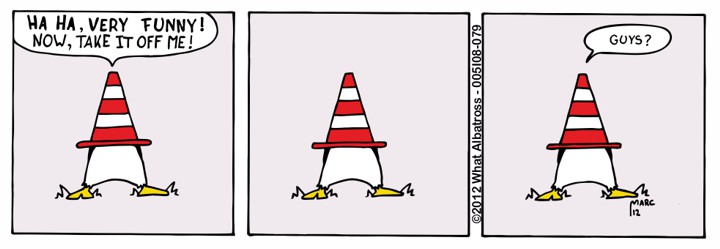
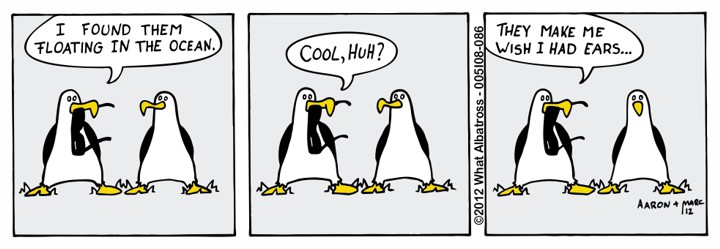

 English
English  Français
Français  Español
Español 